53 start with B start with B
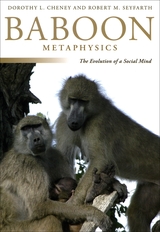
“The vivid narrative is like a bush detective story.”—Steven Poole, Guardian
“Baboon Metaphysics is a distillation of a big chunk of academic lives. . . . It is exactly what such a book should be—full of imaginative experiments, meticulous scholarship, limpid literary style, and above all, truly important questions.”—Alison Jolly, Science
“Cheney and Seyfarth found that for a baboon to get on in life involves a complicated blend of short-term relationships, friendships, and careful status calculations. . . . Needless to say, the ensuing political machinations and convenient romantic dalliances in the quest to become numero uno rival the bard himself.”—Science News
“Through ingenious playback experiments . . . Cheney and Seyfarth have worked out many aspects of what baboons used their minds for, along with their limitations. Reading a baboon’s mind affords an excellent grasp of the dynamics of baboon society. But more than that, it bears on the evolution of the human mind and the nature of human existence.”—Nicholas Wade, New York Times
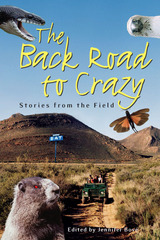
During five years of working in snake-ridden sloughs and rough northern seas, Jennifer Bové often asked herself 'Why am I doing this?' Realizing her own experiences were only the tip of the iceberg, she invited friends and colleagues to answer the same question. The result is stories that include deadly snakebites, a plague of marmots, special delivery skunk oil, bald eagle wrangling, and a mountain goat loose in the galley of a research vessel. These adventures are the details behind the data collected by these men and women driven to unlock nature’s truths. In The Back Road to Crazy, seasoned researchers and novices alike reveal the impulse to trade the comfort of a more sheltered career for demanding physical labor, whims of weather, and the company of unruly creatures.
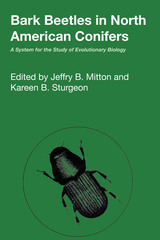
Because they prey upon a wide variety of conifers, bark beetles have a major impact upon western forests. In most of the western states, for example, we have witnessed bark beetles in epidemic outbreaks, attacking and damaging ponderosa pine, limber pine, and other hosts.
The ecosystem of bark beetle and host tree is a highly coevolved community of organisms in which the evolution of one member of the community significantly influences the evolution of the other. Largely because of the enormous economic impact these insects exert on the management of our forests, few other such communities have been studied so extensively. Bark Beetles in North American Conifers brings together in one volume both theory and a wealth of empirical data gathered by researchers from all the fields in which bark beetles are studied: ecology, evolutionary biology, population genetics, entomology, and forestry.
Topics covered include the life cycle of bark beetles and their population dynamics, their genetic variation and evolutionary mechanisms, the evolution and systematics of the major groups of bark beetles, pheromone production and its implications for coevolution among these organisms, the interaction between bark beetles and their predators, host resistance and susceptibility, the relationship of parasites and symbiotic micro-organisms in general, and management and control of bark beetles based on sound ecological and evolutionary concepts. The concluding section of the book summarizes the dynamics of the coevolved system of bark beetle and host tree and discusses controversial issues for which this system may provide important answers.

Humans have lived in close proximity to other animals for thousands of years. Recent scientific studies have even shown that the presence of animals has a positive effect on our physical and mental health. People with pets typically have lower blood pressure, show fewer symptoms of depression, and tend to get more exercise.
But there is a darker side to the relationship between animals and humans. Animals are carriers of harmful infectious agents and the source of a myriad of human diseases. In recent years, the emergence of high-profile illnesses such as AIDS, SARS, West Nile virus, and bird flu has drawn much public attention, but as E. Fuller Torrey and Robert H. Yolken reveal, the transfer of deadly microbes from animals to humans is neither a new nor an easily avoided problem.
Beginning with the domestication of farm animals nearly 10,000 years ago, Beasts of the Earth traces the ways that human-animal contact has evolved over time. Today, shared living quarters, overlapping ecosystems, and experimental surgical practices where organs or tissues are transplanted from non-humans into humans continue to open new avenues for the transmission of infectious agents. Other changes in human behavior like increased air travel, automated food processing, and threats of bioterrorism are increasing the contagion factor by transporting microbes further distances and to larger populations in virtually no time at all.
While the authors urge that a better understanding of past diseases may help us lessen the severity of some illnesses, they also warn that, given our increasingly crowded planet, it is not a question of if but when and how often animal-transmitted diseases will pose serious challenges to human health in the future.
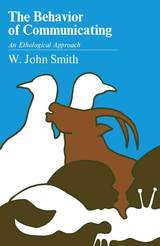
In this book, W. John Smith enlarges ethology's perspective on communication and takes it in new directions. Traditionally, ethological analysis has focused on the motivational states of displaying animals: What makes the bird sing, the cat lash its tail, the bee dance? The Behavior of Communicating emphasizes messages. It seeks to answer questions about the information shared by animals through their displays: What information is made available to a bird by its neighbor's song, to a cat by its opponent's gesture, to a bee by its hivemate's dancing? What information is extracted from sources contextual to these displays? How are the responses to displays adaptive for recipients and senders? What evolutionary processes and constraints underlie observed patterns of animal communication?
Smith's approach is deeply rooted in the ethological tradition of naturalistic observations. Detailed analysis of observed displays and display repertoires illuminates the theoretical discussion that forms the core of the book. A taxonomy and interpretative analysis of messages made available through formalized display behavior are also developed. Smith shows that virtually all subhuman animal displays may be interpreted as transmitting messages about the communicator--not the environment--and, more specifically, that messages indicate the kinds of behavior the displaying animal may choose to perform. The most widespread behavioral messages are surprisingly general, even banal, in character; yet they make public information that is not readily available from other sources and that would otherwise be essentially private to the communicator. Taken along with information from sources contextual to the displays, the messages made available may permit responses that are markedly specific. By taking advantage of contextual specificity, a species expands the capacity of its display behavior to be functional in numerous and diverse circumstances.
After developing the concept of messages and discussing their forms, the responses made to them, and the functions engendered, Smith turns to the evolution of display behavior--the ways in which acts become specialized for communication and the nature of the evolutionary constraints affecting the ultimate forms of displays. He revises the traditional ethological concept of displays, and in a final chapter develops the further concept of formalized interactions. Here he extends the discussion to formal patterns of behavior that, unlike displays, are beyond the capabilities of individual performers. Human nonverbal communication, which is considered from time to time throughout the book, provides the richest examples of communication flexibly structured at this level of complexity.

This readable text represents a much needed synthesis of ecological insight into animal behavior. The field of behavioral ecology is relatively new, having evolved from a combination of classical ethology, as developed by Lorenz and Tinbergen, and population ecology. Now for the first time, a single author integrates the vast literature on animal ecology and behavior into a conceptual whole.
Exploring the theme of resource acquisitions, Douglass H. Morse combines the comparative approach to biology with models based on evolutionary theory. Secondary consequences of sexual selection and other selective pressures are considered in detail. Discussion of interspecific interactions and constraints is especially rich, as is the treatment of foraging theory, kinship theory, habitat selection and predator avoidance. Perhaps the book’s greatest achievement, however, is its unparalleled ecological and evolutionary analysis of individual differences.
Behavioral Mechanisms in Ecology will meet the teaching and reference needs of an extremely broad audience of professional biologists.
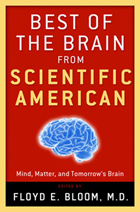
We hear about a woman with an artificial arm controlled by her mind, read stories about the creative potential of “right-brain” and “left-brain” people, and watch science fiction films featuring characters with implanted mind chips. Yet few of us understand the science behind these and other visionary advances being made today in brain research. Leading neuroscientists and scholars have charted the stream of new findings in Scientific American and Scientific American Mind, and their articles from the past eight years, compiled here in a comprehensive volume, offer diverse and provocative perspectives on various cutting-edge brain science projects.
Scientific American, the oldest continuously published magazine in the United States, has long been the standard bearer of science journalism, and the brain science articles published in its pages offer unparalleled insights into the world of neuroscience. The expert articles assembled here, divided into three sections, reveal the latest developments of brain research in a compelling and wholly readable fashion and explore the range of fields and topics now included under the umbrella of neuroscience.
Consciousness and creativity are the focus of the “Mind” section, which features such compelling essays as science writer Carl Zimmer’s examination of how the brain creates a sense of self. Steven E. Hyman, Harvard Provost and former director of the National Institute of Mental Health, proposes new ways of diagnosing psychiatric disorders in “Matter,” a section that also features articles on psychological disorders, addictions, and other topics related to the interaction between body and brain. And “Tomorrow’s Brain” reveals the intriguing future potential of man-machine interactions, as well as pioneering new methods of brain treatment. Eminent neuroscientist Floyd E. Bloom also contributes an engaging introduction that situates these pieces on the front lines of brain research.
In today’s technologically driven world, our lives are changing faster than ever, and neuroscience is becoming an integral part of that transformation. Best of the Brain from Scientific American gathers the very best writings on this sea change, providing an invaluable guide to the exhilarating possibilities of neuroscience.

Berger’s fieldwork that frigid day raised important questions that would require years of travel and research to answer: Can naive animals avoid extinction when they encounter reintroduced carnivores? To what extent is fear culturally transmitted? And how can a better understanding of current predator-prey behavior help demystify past extinctions and inform future conservation?
The Better to Eat You With is the chronicle of Berger’s search for answers. From Yellowstone’s elk and wolves to rhinos living with African lions and moose coexisting with tigers and bears in Asia, Berger tracks cultures of fear in animals across continents and climates, engaging readers with a stimulating combination of natural history, personal experience, and conservation. Whether battling bureaucracy in the statehouse or fighting subzero wind chills in the field, Berger puts himself in the middle of the action. The Better to Eat You With invites readers to join him there. The thrilling tales he tells reveal a great deal not only about survival in the animal kingdom but also the process of doing science in foreboding conditions and hostile environments.

In this book, Elizabeth Davidson shares amazing stories about diseases of insects and other invertebrates important to people—and about the scientists who learned to use those diseases to control pests and create products beneficial to humans. Focusing on insect-microbial interactions crucial to public health, she tells detective stories ranging across global history, from the silkworm farms of nineteenth-century Japan to the research labs of modern America. In these fascinating accounts, Davidson shows us how human health often comes down to a contest of bug against bug. Even habitats seething with bacteria, such as the runoff from cattle farms or sewage treatment plants, are also teeming with invertebrate life—animals that, like ourselves, have ways of fighting infection.
Scientific curiosity about what allows creatures as simple as water fleas to survive in such polluted environments has led to the discovery of chemicals with remarkable properties and potential usefulness to humankind. From diseases of shellfish to parasites of bees, Davidson opens a window on a world most of us never stop to consider—but which matters to all of us more than we might ever imagine. In our present era of pandemic scares, Big Fleas Have Little Fleas is a sweeping historical review that’s as timely as tomorrow’s headlines, showing us that the most exciting discoveries can emerge from the smallest sources.

In concise and clear prose, Sherwood charts the history of this environmental and political conflict, examining the creation of the Alaska Game Commission in the early 1930s, the use of distorted science and menacing technologies, the antipathy of farmers and fishermen toward animals, and the prevailing belief in man’s right to shoot wild animals at will. An incisive historical study of the flawed attempts to govern big game predation, Big Game in Alaska will be essential reading for historians and environmentalists alike.
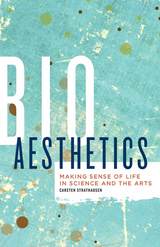
In recent years, bioaesthetics has used the latest discoveries in evolutionary studies and neuroscience to provide new ways of looking at art and aesthetics. Carsten Strathausen’s remarkable exploration of this emerging field is the first comprehensive account of its ideas, as well as a timely critique of its limitations.
Strathausen familiarizes readers with the basics of bioaesthetics, grounding them in its philosophical underpinnings while articulating its key components. Importantly, he delves into the longstanding problem of the “two cultures” that separate the arts and the sciences. Seeking to make bioaesthetics a more robust way of thinking, Strathausen then critiques it for failing to account for science’s historical and cultural assumptions. At its worst, he says, biologism reduces artworks to mere automatons that rubber-stamp pre-established scientific truths.
Written with a sensitive understanding of science’s strengths, and willing to refute its best arguments, Bioaesthetics helps readers separate the sensible from the specious. At a time when humanities departments are shrinking—and when STEM education is on the rise—Bioaesthetics makes vital points about the limitations of science, while lodging a robust defense of the importance of the humanities.
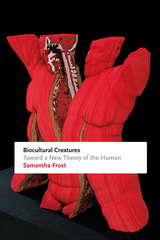
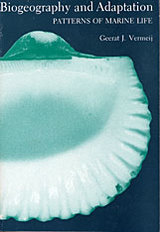

Biohackers explores fundamental changes occuring in the circulation and ownership of scientific information. Alessandro Delfanti argues that the combination of the ethos of 20th century science, the hacker movement and the free software movement is producing an open science culture which redefines the relationship between researchers, scientific institutions and commercial companies.
Biohackers looks at the emergence of the citizen biology community ‘DIYbio’, the shift to open access by the American biologist Craig Venter and the rebellion of the Italian virologist Ilaria Capua against WHO data-sharing policies.
Delfanti argues that these biologists and many others are involved in a transformation of both life sciences and information systems, using open access tools and claiming independence from both academic and corporate institutions.
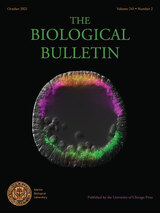
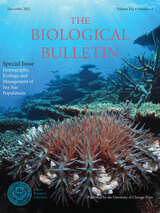
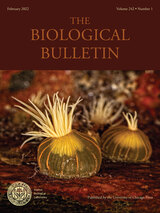

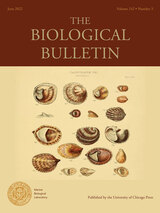
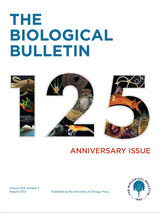
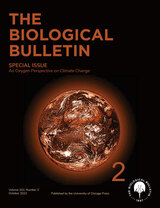
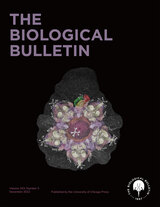
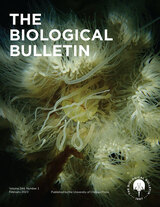
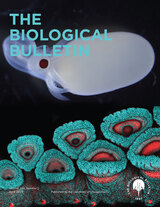


At the 1988 summer session, the internationally famous Marine Biological Laboratory (MBL) at Woods Hole, Massachusetts celebrated one hundred years of pioneering science. During the centennial festivities, many of the world's most renowned biologists assembled at MBL and delivered the Lab's traditional Friday Night Lectures, which as always were extraordinary and memorable. These lectures have been gathered and judiciously edited here by three eminent participants.
Each centennial lecture is dedicated to one or two MBL pioneers, investigators at the forefront of the "new biology" that emerged toward the turn of the century. The MBL often provided an environment that was conducive to revolutionizing the discipline, replacing its largely descriptive and speculative methods with lively analytical and experimental science.
Combining history and current science, each lecture focuses on a subfield of biology. The speakers represented include John Gurdon on developmental biology, Joshua Lederberg on genetics, Torsten Wiesel on neurobiology, and E. 0. Wilson on animal behavior. Benjamin Kamminer provides an account of the work of Albert Szent-Györgyi, capturing his iconoclastic, tenacious, sometimes outrageous nature, as well as his humor and insight. And Gerald Weissmann compares Jacques Loeb and Gertrude Stein--an unlikely pair bound by their common assent to mechanistic materialism.
The history and scientific discovery in these pages should convey for any reader whether biologist, historian, or interested layperson--the excitement of the renowned laboratory and the drama and frustration of biology in the twentieth century.
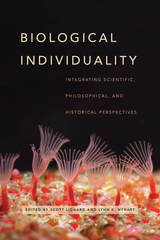
Bringing together biologists, historians, and philosophers, this book provides a multifaceted exploration of biological individuality that identifies leading and less familiar perceptions of individuality both past and present, what they are good for, and in what contexts. Biological practice and theory recognize individuals at myriad levels of organization, from genes to organisms to symbiotic systems. We depend on these notions of individuality to address theoretical questions about multilevel natural selection and Darwinian fitness; to illuminate empirical questions about development, function, and ecology; to ground philosophical questions about the nature of organisms and causation; and to probe historical and cultural circumstances that resonate with parallel questions about the nature of society. Charting an interdisciplinary research agenda that broadens the frameworks in which biological individuality is discussed, this book makes clear that in the realm of the individual, there is not and should not be a direct path from biological paradigms based on model organisms through to philosophical generalization and historical reification.

On the subject of science in Nazi Germany, we are apt to hear about the collaboration of some scientists, the forced emigration of talented Jewish scientists, the general science phobia of leaders of the Third Reich--but little detail about what actually transpired. Biologists under Hitler is the first book to examine the impact of Nazism on the lives and research of a generation of German biologists. Drawing on previously unutilized archival material, Ute Deichmann, herself a biologist, explores not only what happened to the biologists forced to emigrate but also the careers, science, and crimes of those who stayed in Germany.
Biologists under Hitler combines exhaustive research with capsule biographies of key scientists to overturn certain assumptions about science under the Nazi regime. Biological research, for instance, was neither neglected nor underfunded during World War II; funding by the German Research Association (DFG) in fact increased tenfold between 1933 and 1938, and genetic research in particular flourished. Deichmann shows that the forced emigration of Jews had a less significant impact in biology than in other fields. Furthermore, she reveals that the widely observed decline in German biology after 1945 was not caused primarily by the Third Reich's science policy or by the expulsion of biologists but was due to the international isolation of German scientists as part of the legacy of National Socialism. Her book also provides overwhelming evidence of German scientists' conscious misrepresentation after the war of their wartime activities. In this regard, Deichmann's capsule biography of Konrad Lorenz is particularly telling.
Certain to be regarded as the most thorough and comprehensive account of biological science in Nazi Germany, Biologists under Hitler will interest historians of science, historians of the Nazi era, and biologists, as well as those who wish to learn about the relationship between scientific truth and political realities.


Over the course of human history, the sciences, and biology in particular, have often been manipulated to cause immense human suffering. For example, biology has been used to justify eugenic programs, forced sterilization, human experimentation, and death camps—all in an attempt to support notions of racial superiority. By investigating the past, the contributors to Biology and Ideology from Descartes to Dawkins hope to better prepare us to discern ideological abuse of science when it occurs in the future.
Denis R. Alexander and Ronald L. Numbers bring together fourteen experts to examine the varied ways science has been used and abused for nonscientific purposes from the fifteenth century to the present day. Featuring an essay on eugenics from Edward J. Larson and an examination of the progress of evolution by Michael J. Ruse, Biology and Ideology examines uses both benign and sinister, ultimately reminding us that ideological extrapolation continues today. An accessible survey, this collection will enlighten historians of science, their students, practicing scientists, and anyone interested in the relationship between science and culture.

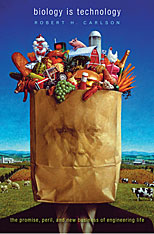
Technology is a process and a body of knowledge as much as a collection of artifacts. Biology is no different—and we are just beginning to comprehend the challenges inherent in the next stage of biology as a human technology. It is this critical moment, with its wide-ranging implications, that Robert Carlson considers in Biology Is Technology. He offers a uniquely informed perspective on the endeavors that contribute to current progress in this area—the science of biological systems and the technology used to manipulate them.
In a number of case studies, Carlson demonstrates that the development of new mathematical, computational, and laboratory tools will facilitate the engineering of biological artifacts—up to and including organisms and ecosystems. Exploring how this will happen, with reference to past technological advances, he explains how objects are constructed virtually, tested using sophisticated mathematical models, and finally constructed in the real world.
Such rapid increases in the power, availability, and application of biotechnology raise obvious questions about who gets to use it, and to what end. Carlson’s thoughtful analysis offers rare insight into our choices about how to develop biological technologies and how these choices will determine the pace and effectiveness of innovation as a public good.

This synthesis of thirty-five years of intensive investigation comes at a particularly propitious moment. Since the Second World War, cell biology and molecular biology have worked separately in probing the central question of cancer research--how do cells divide?--biology focusing on cell behavior in isolation and as part of tissues and organs, molecular biology concentrating on individual biochemical steps, especially as controlled by genes. But now a new alliance is being forged in the continuing effort to conquer cancer. New discoveries point to the value of an interdisciplinary approach, and for the first time scientists from both camps are struggling to catch up on one another's literature.
Baserga's work provides the unifying background for this cross-fertilization of ideas. It begins with the growth of cell populations and how cells interact with each other. The second section goes within the cell to consider the effect of drugs, the use of temperature-sensitive mutants of the cell cycle, and the use of cell fusion to understand how cells divide. The third section turns to the molecular genetics of cell proliferation, the growth factors, and the genes and gene products that regulate cell division.
Drawing on more than five hundred classic and recent references, the book is comprehensive yet refreshingly readable. It will provide a congenial and sophisticated introduction for students as well as working scientists.

Unearthing the fearful flesh and sinful skins at the heart of gothic horror, Jack Morgan rends the genre’s biological core from its oft-discussed psychological elements and argues for a more transhistorical conception of the gothic, one negatively related to comedy. The Biology of Horror: Gothic Literature and Film dissects popular examples from the gothic literary and cinematic canon, exposing the inverted comic paradigm within each text.
Morgan’s study begins with an extensive treatment of comedy as theoretically conceived by Suzanne Langer, C. L. Barber, and Mikhail Bakhtin. Then, Morgan analyzes the physical and mythological nature of horror in inverted comic terms, identifying a biologically grounded mythos of horror. Motifs such as sinister loci, languishment, masquerade, and subversion of sensual perception are contextualized here as embedded in an organic reality, resonating with biological motives and consequences. Morgan also devotes a chapter to the migration of the gothic tradition into American horror, emphasizing the body as horror’s essential place in American gothic.
The bulk of Morgan’s study is applied to popular gothic literature and films ranging from high gothic classics like Matthew Lewis’s The Monk, Ann Radcliffe’s The Mysteries of Udolpho, Charles Maturin’s Melmoth the Wanderer, and Mary Shelley’s Frankenstein, to later literary works such as Poe’s macabre tales, Melville’s “Benito Cereno,” J.S. Le Fanu’s Uncle Silas, H.P. Lovecraft’s “The Shadow over Innsmouth,” Shirley Jackson’s The Haunting of Hillhouse, Stephen King’s Salem’s Lot, and Clive Barker’s The Damnation Game. Considered films include Nosferatu, Invasion of the Body Snatchers, Friday the 13th, Halloween, Night of the Living Dead, Angel Heart, The Stand, and The Shining.
Morganconcludes his physical examination of the Gothic reality with a consideration born of Julia Kristeva’s theoretical rubric which addresses horror’s existential and cultural significance, its lasting fascination, and its uncanny positive—and often therapeutic—direction in literature and film.


The Biology of Human Starvation was first published in 1950. Minnesota Archive Editions uses digital technology to make long-unavailable books once again accessible, and are published unaltered from the original University of Minnesota Press editions.
With great areas of the world battling the persistent and basic problem of hunger, this work constitutes a major contribution to needed scientific knowledge. The publication is a definitive treatise on the morphology, biochemistry, physcology, psychology, and medical aspects of calorie undernutrition, cachexia, starvation, and rehabilitation in man.
Presented critically and systematically are the fact and theory from the world literature, including the evidence from World War II and the finding of the Minnesota Starvation Experiment (1944*1946). Pertinent experiments and field and clinical observations to 1949 are covered.
The extensive original research involved was conducted at the University of Minnesota Laboratory of Physiological Hygiene, which Dr. Keys heads. The authors, all of the laboratory staff, were assisted in preparation of the work by Ernst Simonson, Samuel Wells and Angie Sturgeon Skinner.

Goldberg examines the nature not only of coral reefs—the best known among types of reefs—but also of sponge reefs, worm reefs, and oyster reefs, explaining the factors that influence their growth, distribution, and structure. A central focus of the book is reef construction, and Goldberg details the plants and animals that form the scaffold of the reef system and allow for the attachment and growth of other organisms, including those that function as bafflers, binders, and cementing agents. He also tours readers through reef ecology, paleontology, and biogeography, all of which serve as background for the problems reefs face today and the challenge of their conservation.
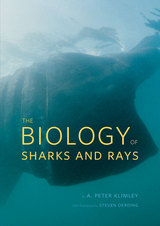
The book will be a useful textbook for advanced ichthyology students as well as an encyclopedic source for those seeking a greater understanding of these fascinating creatures.


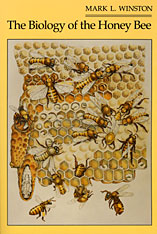
From ancient cave paintings of honey bee nests to modern science’s richly diversified investigation of honey bee biology and its applications, the human imagination has long been captivated by the mysterious and highly sophisticated behavior of this paragon among insect societies. In the first broad treatment of honey bee biology to appear in decades, Mark Winston provides rare access to the world of this extraordinary insect.
In a bright and engaging style, Winston probes the dynamics of the honey bee’s social organization. He recreates for us the complex infrastructure of the nest, describes the highly specialized behavior of workers, queens, and drones, and examines in detail the remarkable ability of the honey bee colony to regulate its functions according to events within and outside the nest. Winston integrates into his discussion the results of recent studies, bringing into sharp focus topics of current bee research. These include the exquisite architecture of the nest and its relation to bee physiology; the intricate division of labor and the relevance of a temporal caste structure to efficient functioning of the colony; and, finally, the life-death struggles of swarming, supersedure, and mating that mark the reproductive cycle of the honey bee.
The Biology of the Honey Bee not only reviews the basic aspects of social behavior, ecology, anatomy, physiology, and genetics, it also summarizes major controversies in contemporary honey bee research, such as the importance of kin recognition in the evolution of social behavior and the role of the well-known dance language in honey bee communication. Thorough, well-illustrated, and lucidly written, this book will for many years be a valuable resource for scholars, students, and beekeepers alike.

Although there were neither professors of morphology nor a morphologists' society, morphologists achieved influence by "colonizing" niches in a variety of disciplines. Scientists in anatomy, zoology, natural history, and physiology considered their work morphological, and the term encompassed research that today might be classified as embryology, systematics, functional morphology, comparative physiology, ecology, behavior, evolutionary theory, or histology. Nyhart draws on research notes, correspondence, and other archival material to examine how these scientists responded to new ideas and to the work of colleagues. She examines the intertwined histories of morphology and the broader biological enterprise, demonstrating that the study of form was central to investigations of such issues as the relationships between an animal's structure and function, between an organism and its environment, and between living species and their ancestors.
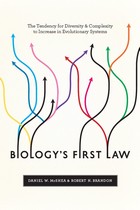
Life on earth is characterized by three striking phenomena that demand explanation: adaptation—the marvelous fit between organism and environment; diversity—the great variety of organisms; and complexity—the enormous intricacy of their internal structure. Natural selection explains adaptation. But what explains diversity and complexity? Daniel W. McShea and Robert N. Brandon argue that there exists in evolution a spontaneous tendency toward increased diversity and complexity, one that acts whether natural selection is present or not. They call this tendency a biological law—the Zero-Force Evolutionary Law, or ZFEL. This law unifies the principles and data of biology under a single framework and invites a reconceptualization of the field of the same sort that Newton’s First Law brought to physics.
Biology’s First Law shows how the ZFEL can be applied to the study of diversity and complexity and examines its wider implications for biology. Intended for evolutionary biologists, paleontologists, and other scientists studying complex systems, and written in a concise and engaging format that speaks to students and interdisciplinary practitioners alike, this book will also find an appreciative audience in the philosophy of science.

Bioluminescence is everywhere on earth—most of all in the ocean, from angler fish in the depths to the flashing of dinoflagellates at the surface. Here, Thérèse Wilson and Woody Hastings explore the natural history, evolution, and biochemistry of the diverse array of organisms that emit light.
While some bacteria, mushrooms, and invertebrates, as well as fish, are bioluminescent, other vertebrates and plants are not. The sporadic distribution and paucity of luminous forms calls for explanation, as does the fact that unrelated groups evolved completely different biochemical pathways to luminescence. The authors explore the hypothesis that many different luciferase systems arose in the early evolution of life because of their ability to remove oxygen, which was toxic to life when it first appeared on earth. As oxygen became abundant and bioluminescence was no longer adequate for oxygen removal, other antioxidant mechanisms evolved and most luminous species became extinct. Those light-emitting species that avoided extinction evolved uses with survival value for the light itself. Today’s luminous organisms use bioluminescence for defense from predators, for their own predatory purposes, or for communication in sexual courtship.
Bioluminescence was earlier viewed as a fascinating feature of the living world, but one whose study seemed unlikely to contribute in any practical way. Today, bioluminescence is no longer an esoteric area of research. Applications are numerous, ranging from the rapid detection of microbial contamination in beef and water, to finding the location of cancer cells, to working out circuitry in the brain.
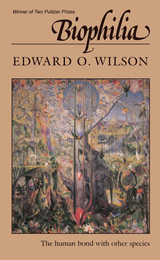

Separate sections on Latin and Greek derivations. Each section has 20 lessons—with assignments following each lesson—giving the user a vast technical vocabulary and increased word-recognition ability.
A Definitive Reference:
Hundreds of Greek and Latin stems, prefixes, and suffixes show the precise application of the classical languages to biological and medical usage. Topic-organized bibliography, index of bases.
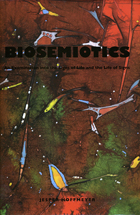
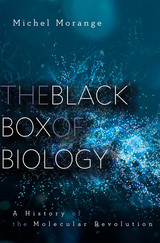
In this masterful account, a historian of science surveys the molecular biology revolution, its origin and continuing impact.
Since the 1930s, a molecular vision has been transforming biology. Michel Morange provides an incisive and overarching history of this transformation, from the early attempts to explain organisms by the structure of their chemical components, to the birth and consolidation of genetics, to the latest technologies and discoveries enabled by the new science of life. Morange revisits A History of Molecular Biology and offers new insights from the past twenty years into his analysis.
The Black Box of Biology shows that what led to the incredible transformation of biology was not a simple accumulation of new results, but the molecularization of a large part of biology. In fact, Morange argues, the greatest biological achievements of the past few decades should still be understood within the molecular paradigm. What has happened is not the displacement of molecular biology by other techniques and avenues of research, but rather the fusion of molecular principles and concepts with those of other disciplines, including genetics, physics, structural chemistry, and computational biology. This has produced decisive changes, including the discoveries of regulatory RNAs, the development of massive scientific programs such as human genome sequencing, and the emergence of synthetic biology, systems biology, and epigenetics.
Original, persuasive, and breathtaking in its scope, The Black Box of Biology sets a new standard for the history of the ongoing molecular revolution.
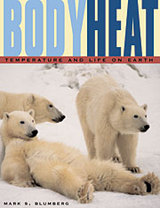
Whether you're a polar bear giving birth to cubs in an Arctic winter, a camel going days without water in the desert heat, or merely a suburbanite without air conditioning in a heat wave, your comfort and even survival depend on how well you adapt to extreme temperatures.
In this entertaining and illuminating book, biopsychologist Mark Blumberg explores the many ways that temperature rules the lives of all animals (including us). He moves from the physical principles that govern the flow of heat in and out of our bodies to the many complex evolutionary devices animals use to exploit those principles for their own benefit.
In the process Blumberg tells wonderful stories of evolutionary and scientific ingenuity--how penguins withstand Antarctic winters by huddling together by the thousands, how vulnerable embryos of many species are to extremes of temperature during their development, why people survive hour-long drowning accidents in winter but not in summer, how certain plants generate heat (the skunk cabbage enough to melt snow around it). We also hear of systems gone awry--how desert species given too much water can drink themselves into bloated immobility, why anorexics often complain of feeling cold, and why you can't sleep if the room is too hot or too cold. After reading this book, you'll never look at a thermostat in quite the same way again.
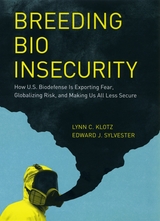
In the years since the 9/11 attacks—and the subsequent lethal anthrax letters—the United States has spent billions of dollars on measures to defend the population against the threat of biological weapons. But as Lynn C. Klotz and Edward J. Sylvester argue forcefully in Breeding Bio Insecurity, all that money and effort hasn’t made us any safer—in fact, it has made us more vulnerable.
Breeding Bio Insecurity reveals the mistakes made to this point and lays out the necessary steps to set us on the path toward true biosecurity. The fundamental problem with the current approach, according to the authors, is the danger caused by the sheer size and secrecy of our biodefense effort. Thousands of scientists spread throughout hundreds of locations are now working with lethal bioweapons agents—but their inability to make their work public causes suspicion among our enemies and allies alike, even as the enormous number of laboratories greatly multiplies the inherent risk of deadly accidents or theft. Meanwhile, vital public health needs go unmet because of this new biodefense focus. True biosecurity, the authors argue, will require a multipronged effort based in an understanding of the complexity of the issue, guided by scientific ethics, and watched over by a vigilant citizenry attentive to the difference between fear mongering and true analysis of risk.
An impassioned warning that never loses sight of political and scientific reality, Breeding Bio Insecurity is a crucial first step toward meeting the evolving threats of the twenty-first century.

Fabrics that are not only stain resistant but actually clean themselves. Airplane wings that change shape in midair to take advantage of shifts in wind currents. Hypodermic needles that use tiny serrations to render injections virtually pain free.
Though they may sound like the stuff of science fiction, in fact such inventions represent only the most recent iterations of natural mechanisms that are billions of years old—the focus of the rapidly growing field of biomimetics. Based on the realization that natural selection has for countless eons been conducting trial-and-error experiments with the laws of physics, chemistry, material science, and engineering, biomimetics takes nature as its laboratory, looking to the most successful developments and strategies of an array of plants and animals as a source of technological innovation and ideas. Thus the lotus flower, with its waxy, water-resistant surface, gives us stainproofing; the feathers of raptors become transformable airplane wings; and the nerve-deadening serrations on a mosquito’s proboscis are adapted to hypodermics.
With Bulletproof Feathers, Robert Allen brings together some of the greatest minds in the field of biomimetics to provide a fascinating—at times even jaw-dropping—overview of cutting-edge research in the field. In chapters packed with illustrations, Steven Vogel explains how architects and building engineers are drawing lessons from prairie dogs, termites, and even sand dollars in order to heat and cool buildings more efficiently; Julian Vincent goes to the very building blocks of nature, revealing how different structures and arrangements of molecules have inspired the development of some fascinating new materials, such as waterproof clothing based on shark skin; Tomonari Akamatsu shows how sonar technology has been greatly improved through detailed research into dolphin communication; Yoseph Bar-Cohen delves into the ways that robotics engineers have learned to solve design problems through reference to human musculature; Jeannette Yen explores how marine creatures have inspired a new generation of underwater robots; and Robert Allen shows us how cooperative behavior between birds, fish, and insects has inspired technological innovations in fields ranging from Web hosting to underwater exploration.
A readable, yet authoritative introduction to a field that is at the forefront of design and technology—and poised to become even more important in the coming decades as population pressures and climate change make the need for efficient technological solutions more acute—Bulletproof Feathers offers adventurous readers a tantalizing peek into the future, by way of our evolutionary past.
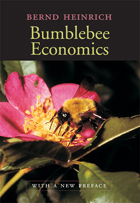
Here is a brilliant introduction to insect and plant ecology focusing on one of nature’s most adaptive creatures, the bumblebee. Survival for the bumblebee depends on its ability to regulate body temperature through a complex energy exchange, and it is this management of energy resources around which Bernd Heinrich enters his discussion of physiology, behavior, and ecological interaction. Along the way, he makes some amusing parallels with the theories of Adam Smith—which, Heinrich observes, work rather well for the bees, however inadequate they may be for human needs.
Bumblebee Economics uniquely offers both the professional and amateur scientist a coherent biological model that goes beyond any particular species or level of biological organization. Rich in specific detail and including an extensive appendix on the rearing of bumblebees, as well as a full-color guide to field identification, this book organizes practical knowledge according to a new criterion.
In a new preface, Heinrich ranges from Maine to Alaska and north to the Arctic as he summarizes findings from continuing investigations over the past twenty-five years—by himself and others—into the wondrous “energy economy” of bumblebees.

Addressing this intellectual revolution for the first time, Rudwick examines the ideas and practices of earth scientists throughout the Western world to show how the story of what we now call "deep time" was pieced together. He explores who was responsible for the discovery of the earth's history, refutes the concept of a rift between science and religion in dating the earth, and details how the study of the history of the earth helped define a new branch of science called geology. Rooting his analysis in a detailed study of primary sources, Rudwick emphasizes the lasting importance of field- and museum-based research of the eighteenth and nineteenth centuries.
Bursting the Limits of Time, the culmination of more than three decades of research, is the first detailed account of this monumental phase in the history of science.
READERS
Browse our collection.
PUBLISHERS
See BiblioVault's publisher services.
STUDENT SERVICES
Files for college accessibility offices.
UChicago Accessibility Resources
home | accessibility | search | about | contact us
BiblioVault ® 2001 - 2024
The University of Chicago Press









